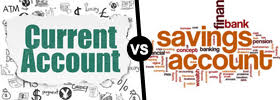Difference between Water Cycle and Hydrologic Cycle
Key difference: Water Cycle or Hydrologic Cycle or the H2O cycle describes the continuous movement of water from on, above and below the surface of Earth. It is the journey, which water takes as it circulates from the land to sky and back again. This cycle maintains the water consistency throughout the Earth.
The water cycle is also called as hydrological cycle or the H2O cycle. Almost 70% of the Earth consists of water; it is the natural source which exists in nature. The amount of water remains fairly constant on earth’s surface due to its respective cycles. Water keeps on getting regulated from ground to sky and then back to ground through evaporation, precipitation and cloud formation methods. Also, the distribution of water is not uniform throughout, it keeps on changing, but the water cycles do maintains the uniform amount. Water or Hydrological cycle totally depends on the amount of rainfall fallen on the ground surface.
Cycle Process:
Water or Hydrological cycle exchanges energy, which leads to change in temperatures. At first the water evaporates by taking the energy from the surroundings, this process cools the environment. So, when it condenses it releases energy and warms the environment. From this heat exchange the climate gets influenced. The evaporative phase of cycle purifies water which then replenishes the land with freshwater. This evaporation phase in the cycle purifies the water which replenishes the land with freshwater. The water further gets accumulated in the clouds and gets condensed in the clouds. When the clouds gets heavy or become full with these accumulations they burst out in the form of rain precipitations on the ground. Hence, this gives rise to the rainy season and fills the ground with water on the ground.
 Water therefore comes back on the ground surface. This cycle continues further by following the heat in the hot climate. The main methods which take part in the water cycle are:
Water therefore comes back on the ground surface. This cycle continues further by following the heat in the hot climate. The main methods which take part in the water cycle are:
- Precipitation: Condensed water vapor that falls to the Earth's surface in the form of participation.
- Canopy Interception: The precipitation intercept the by plant foliage; eventually evaporates back to the atmosphere and hence falls down on the ground.
- Snowmelt: The runoff, so formed is produced by melting snow.
- Infiltration: The flow of water from the ground surface into the ground. Once infiltrated, the water becomes soil moisture or groundwater.
- Evaporation: The transformation of water from liquid to gas phases as it moves from the ground or bodies of water into the overlying atmosphere.
- Sublimation: The state change directly from solid water (snow or ice) to water vapor.
- Condensation: The transformation of water vapor to liquid water droplets in the air, creating clouds and fog.
- Transpiration: The release of water vapor from plants and soil into the air. Water vapor is a gas that cannot be seen.
- Percolation: Water flows horizontally through the soil and rocks under the influence of gravity.
Hence the Water or Hydrological or H2O cycle is the most widespread form of cycle which maintains the water consistency on the earth’s surface and provides water in the nature. Water being the most essential constituent is obtained and maintained by this cycle. Hence the hydrological cycle is the most important cycle in the nature.
Image Courtesy: accuweather.com









Add new comment